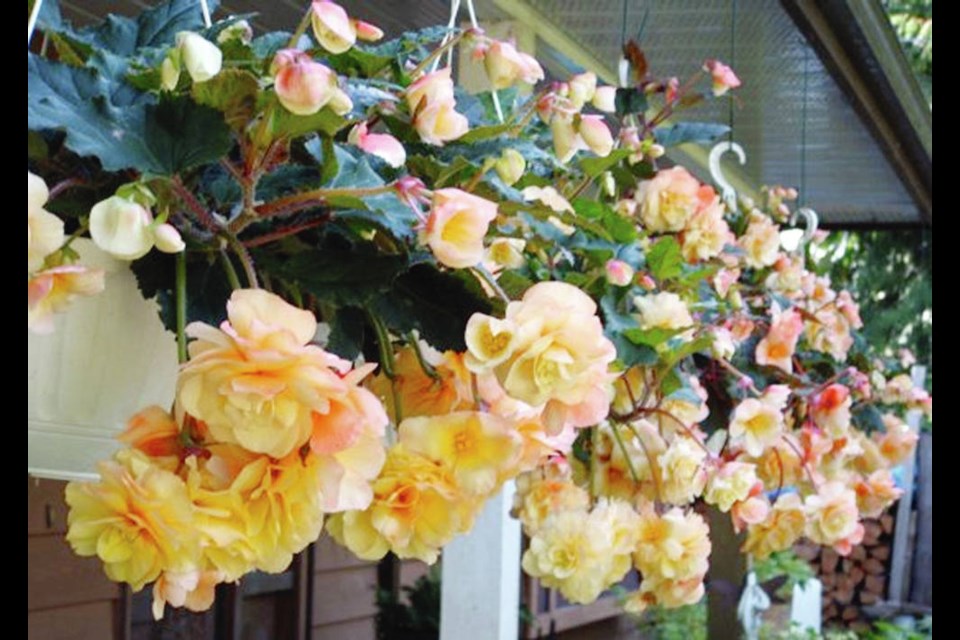Dear Helen: I found that my begonia tubers had already produced long sprouts when I opened their shoe box in my cold room. Should I shorten the shoots? Can the severed shoots be rooted? How should I handle the tubers now? When do I plant them in their outdoor hanging baskets?
L.A.
Until the second week of this month, the winter weather had been very mild. Your cold room may have warmed enough to initiate early sprouting in the tubers. Also, open boxes are preferred for storing begonia tubers. I usually winter them in vermiculite in shallow boxes I get from the liquor store. An occasional light spray-misting with water helps to keep the tubers from shrivelling.
Temperatures in the 5 to 10 C range, and storage in open boxes, usually keep the tubers from sprouting through most of the winter, though they should be checked occasionally to make sure they are remaining in a plump, healthy condition. When tiny pink nubs appear on the indented upper tuber surface, the tubers are ready to launch into a new cycle of growth.
You will need to shorten the long shoots, In the photo you sent, little nodes of potential growth appear clearly on the shoots. Shorten them to leave one or two nodes above the tubers.
It wouldn’t hurt to try rooting the severed shoots. The thickest ones will have the best chance of rooting and producing a decent plant. Leave the top tuft of growth and one or two nodes below it. Make the bottom cut immediately below a node and insert each shoot into holes made in a lightweight, porous, sterile mix in a shallow container. Keep the mix only modestly moistened, the container in warmth and bright indirect light
When the shoots start growing, you’ll know they have rooted. Move the container into cooler temperatures, still with good light, and pot the little plants individually when they are large enough to handle. Good luck.
Once the shoots have been shortened, plant the tubers in communal or individual pots, using a fast-draining potting mix for indoor plants and covering the tuber tops with only a scant layer of the mix. Place the containers in average warmth and in good light but out of direct sun and keep the mix evenly but modestly moistened while the tubers form roots.
When leafy growth is well under way, move the tubers to bright indirect light and coolish room temperatures for strong, stocky growth. Do not over-water.
Move the plants into hanging baskets outdoors when the weather has warmed and night temperatures no longer dip below 10 C. Use an all-purpose potting mix.
Dear Helen: We have moved from a large garden with a greenhouse to a small garden and a house with useable windows for plants all facing north. Our problem is with starting seeds like tomatoes, onion and lettuce indoors. Without supplemental light, seedlings grow lanky and weak. Where can I find clear information on grow-light setups? Do you have grow-lights? How far should the lights be from the seedlings?
C.E.
Grow-light arrangements come in a wide range of types and sizes, from setups ready to plug in and use to strip light fixtures that require some suspension arrangement to place them over plants.
In your place, I’d go to websites that display and inform on an extensive assortment of lighting setups. This would help you to at least pinpoint a style that would suit your needs most closely and fit into your home most conveniently.
Two clear, informative sources are Lee Valley Tools and Veseys Seeds. The print catalogue from Veseys has five full pages of different setups. Both sources have websites with photos and full descriptions of a wide range of plant lighting arrangements.
Once you’ve narrowed the choices to one or two styles that would work for you, consider inquiring at the large garden centres and home and garden supply outlets near you. There may be a local source for the kind of setup you want. For example, I noticed in a Buckerfield’s flyer a table-top mini-greenhouse kit complete with an affixed light fixture.
I use a decades-old, three-tier lighting fixture. Each tier takes two fluorescent tubes. I keep the lights right above but not touching the seedlings.



